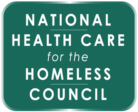The collection and use of homeless mortality data gives the public health community a better understanding of the “who, what, where, why, and how” people are dying while unhoused. It also identifies high-need areas and demographic disparities, informs funding and policy priorities, and allows public health authorities to respond more quickly with evidence-based interventions. Finally, identifying the number of people who die while homeless in the United States is a human rights imperative and calls attention to the critical need for permanent housing.
Unfortunately, there is no national-level reporting of homeless deaths, but more local jurisdictions have been collecting this data by partnering with medical examiners, coroners, and vital statistics offices to conduct homeless mortality reviews. Some jurisdictions have even mandated homelessness reporting in state-level electronic death reporting systems.
This fact sheet offers current high-level mortality estimates, action steps for using this data, links to local/state mortality reports, and additional resources on homeless mortality.
Related resource: Homeless Mortality Data Toolkit (NHCHC, 2021)

